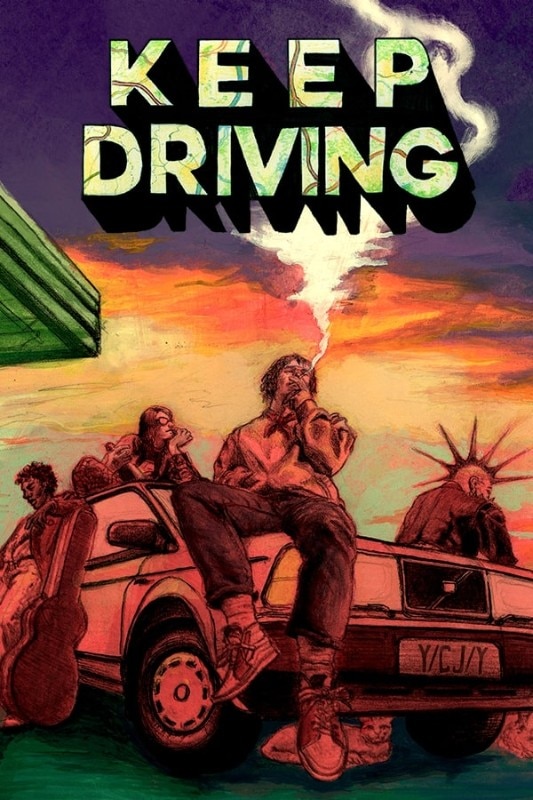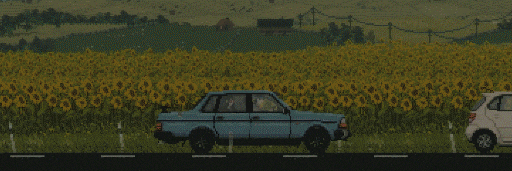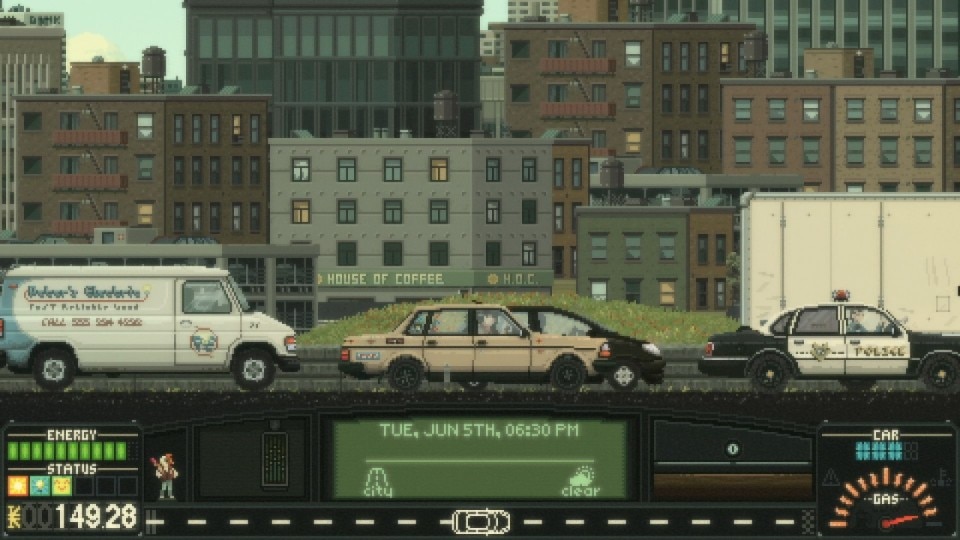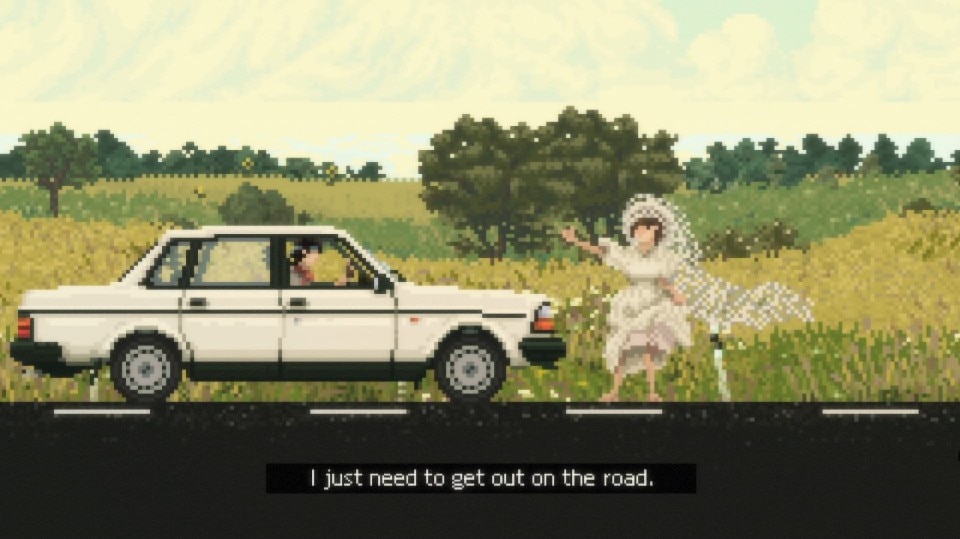Your first car. A few coins in your pocket. The world unfolding before you, every single day a new discovery. The radio always on. Keep Driving, developed by Swedish studio YCJY Games, takes an unusual approach for a driving game: it borrows the structure of a role-playing game to tell a story centered around one of the great myths of the second half of the 20th century—the road trip.
The very idea of a road trip instantly brings to mind milestones of American counterculture that later became cornerstones of the mainstream: the most famous is probably Jack Kerouac’s On the Road (1957), but there’s also Fear and Loathing in Las Vegas by Hunter S. Thompson and The Electric Kool-Aid Acid Test by Tom Wolfe. Then there are the films, from Easy Rider to Thelma & Louise, and of course, the music. Bob Dylan is front and center: Highway 61 Revisited features Like a Rolling Stone, the song of no direction home—a phrase that became a manifesto.

Even today, the car journey still carries a mythic weight—an aspiration to freedom. But the overdose of technology—flawless GPS maps, pre-booked stops, hotel reservations on Booking—has undeniably stripped away some of the magic. Add to that a shifting cultural attitude toward cars: from symbols of individual freedom to objects that, for many reasons, have lost some of their charm.
Cars have always been central to video games. It all started in the 1970s with Atari’s Gran Trak 10, the first-ever racing video game. From that point on, the automobile became a goldmine for developers and publishers. Some of gaming’s longest-running franchises—Gran Turismo, Need for Speed, Forza—are all about racing. Out Run, with its simple yet unforgettable graphics, is an iconic symbol of the ’80s—not just in gaming, but culturally. And then there’s GTA, Grand Theft Auto, arguably the most famous intellectual property in all of gaming. Sure, car theft is just a small part of it—despite the name—but there’s a whole lot of driving (and even more talking) in cars.

In recent years, many indie developers have found subtle, poignant ways to explore our bittersweet and nostalgic relationship with the car. Often by shifting the focus away from racing and onto the journey itself. Wheels of Aurelia (Santa Ragione, 2016) is a fascinating game set in Italy with a strong feminist thread. The recent Open Roads uses the excuse of a road trip to tell a nuanced mother-daughter story. And then we come to Keep Driving—a true celebration of an era of adventures that might no longer be possible.
Beyond its clever and fitting choice to use RPG mechanics to structure the narrative—with all its challenges, encounters, and surprises—there are at least two elements that make Keep Driving one of the most interesting titles to come out in early 2025. First, there’s the pixel art aesthetic. It may be close to a cliché by now, but in this case, it’s not just a nostalgic nod to retro games—it evokes a fictional time more than a real one. A kind of “pre-HD” mythology that smells like asphalt, gasoline, and nights spent sleeping in the back seat with stars shining through the windshield.

Then there’s procedural generation. The story of Keep Driving is simple: the protagonist must cross a fictional country to reach a music festival. But the game is entirely rebuilt from scratch each time you play. The roads you travel, the encounters you have, even the hitchhikers you meet—who become essential resources for overcoming the many dangers on the road—are all different in every playthrough.
“It’s not the years, honey, it’s the mileage,” says Indiana Jones in one of the most iconic lines from Raiders of the Lost Ark. He means that experience—not age—is what really counts. And experience, after all, is measured in miles. It’s a line we borrow here, because it perfectly captures the spirit of Keep Driving, a little gem of storytelling disguised as a driving game.
Opening image: Y/CJ/Y, Keep Driving, 2025


